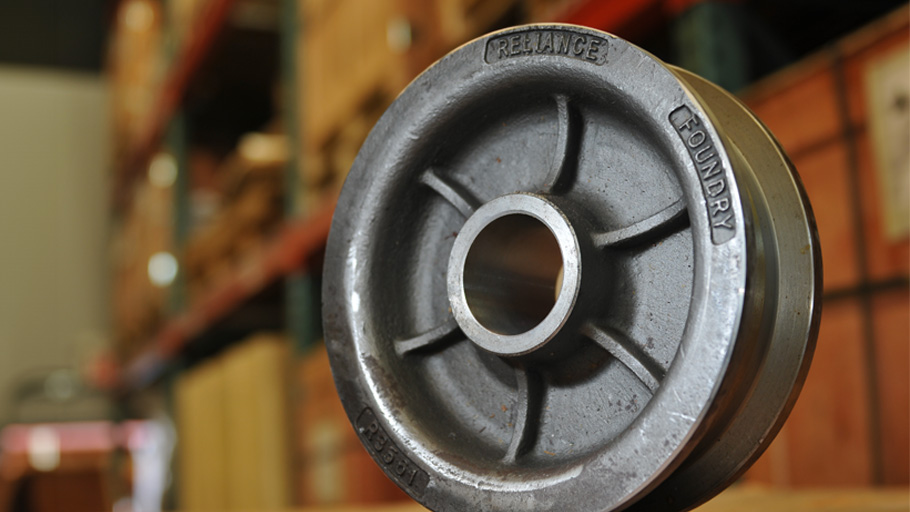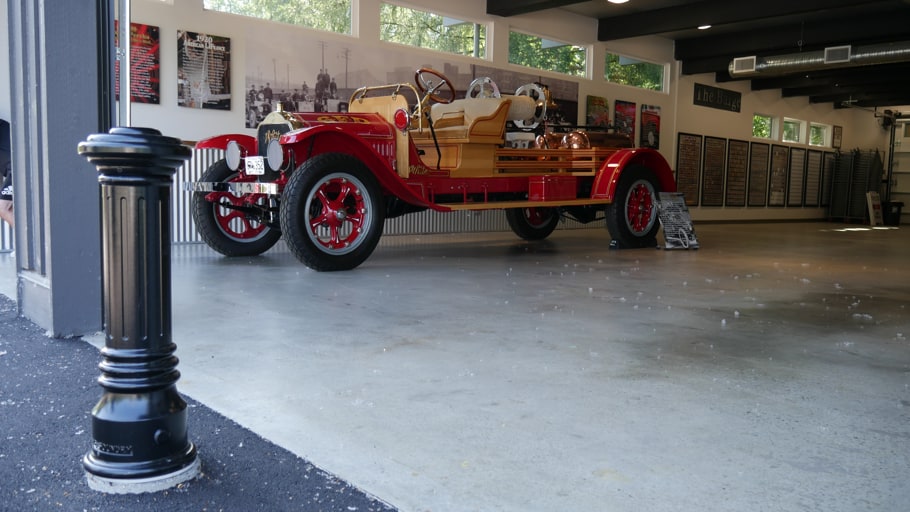Metallurgy for Brewers

Craft beer is all about the flavor
Craft beer is in a renaissance. Whether it’s home brew or a professional micro-brewery, true beer fans are starting to care more about flavor than advertising.
To achieve specific flavors, professional and hobby brewers alike put time and energy into selecting ingredients: Wet or dry hopped? Base or roasted malts? Ale or lager?
Amid all those choices, some brewers treat equipment as an afterthought – and that’s a big mistake.
It may sound unlikely, but the metals in your brew pot, fermenter, and other equipment can have a big impact on flavor. Metals that are difficult to sanitize increase the risk of funky bacteria in your brew, while those prone to liquid interaction can add an unpleasant metallic taste. The best brewing metals are easy to clean and tasteless.
Stainless steel is the industry standard thanks to easy cleaning and excellent corrosion resistance, but it’s far from the only option. Brewing equipment is also available in copper and aluminum, with some brass accessories. Each metal has its own characteristics and advantages, and even in the refined realm of stainless steel, not all grades are created equal.
Copper
Long before stainless steel entered the market, copper was the go-to metal for brewery equipment. Its popularity dropped sharply once stainless steel became more affordable, but copper remains a solid choice for your brewing kettle thanks to its excellent thermal conductivity. It is also the easiest metal to fabricate, making it an obvious choice for do-it-yourself custom equipment.
Copper isn’t completely inert to beer, but it does build up a stable oxide layer with proper care. Because it is stable (ie. prevents chemical interaction), copper with an oxide layer won’t leach metallic flavor into your beer.
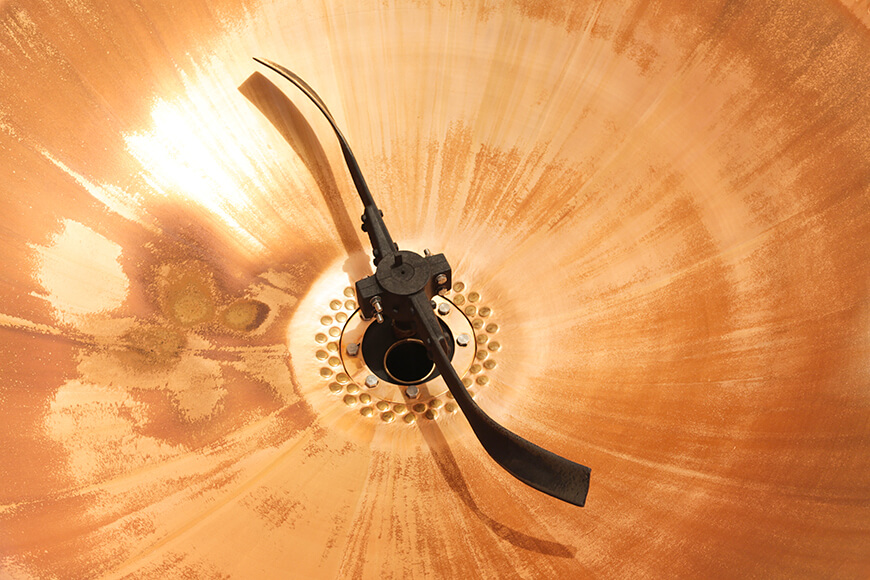
A traditional copper distilling tank
Copper is also fairly easy to clean and maintain – in fact, too much scrubbing is actually bad for it. You don’t want bright or shiny copper. A healthy oxide layer gives it a dull, old-penny finish.
Regular cleaning with dish detergent or a sodium percarbonate-based cleaner is usually enough to keep copper clean and oxidized.
That said, more oxide isn’t always better. Copper can develop a toxic blue-green oxide called verdigris. If you see that blue-green color anywhere on your brewing equipment, it’s time for a thorough scrub with vinegar or an oxalic acid-based cleaner.
Be careful what cleaner you use! Bleach and hydrogen peroxide will cause your copper to blacken, and they won’t protect from further corrosion.
Aluminum
Aluminum makes a respectable brew kettle, but it should never be used for long term beer storage. Its thermal conductivity is around half that of copper, but still better than stainless steel.
Despite its deficiencies, aluminum does have one important advantage over copper – it will not corrode or add any metallic flavor to your beer in normal brewing conditions. It will corrode with long term exposure to other metals (including copper), but brief contact isn’t an issue.
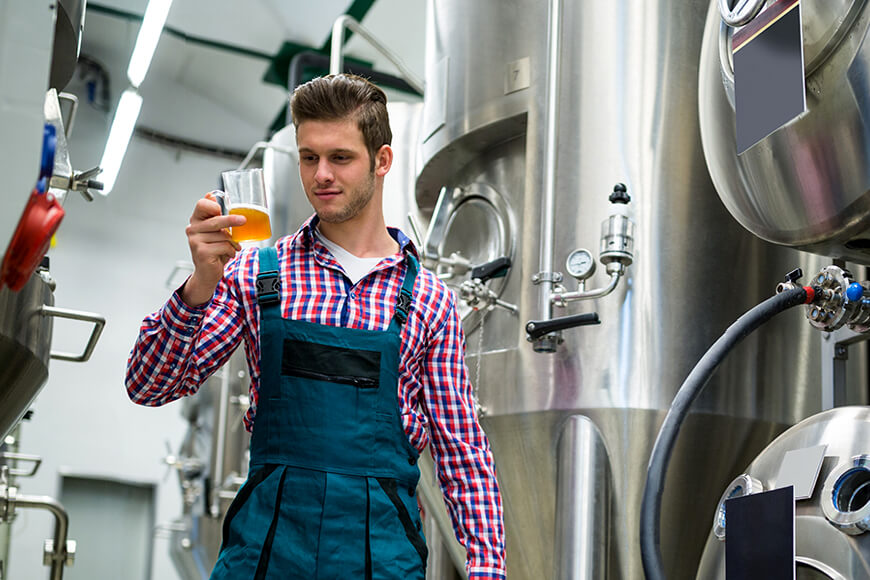
Beer is regularly tasted to screen for off-flavors
You can use pretty much the same set of cleaners for aluminum sanitation as you would for copper: unscented dish detergent or percarbonate based cleaners are recommended, but bleach and other caustic cleaners are out.
The inability to use caustic cleaners on aluminum is a problem for professional brewers. They need a fast and effective way to sanitize, and being restricted to milder cleaners means more work with a less effective tool – and vat contamination doesn’t make for rosy results.
Brewers who do use an aluminum kettle usually choose 3003 or 3004 grades for the superior corrosion resistance.
Stainless Steel
Stainless steel is the brewery industry standard, and most home-brewers dream of an all stainless steel set up. Its near market monopoly stems from a few characteristics: it is easy to sanitize, inert to beer, corrosion resistant, and durable.
You might be tempted to buy all stainless and call it a day, but as always, life isn’t that simple. There are multiple grades of stainless. Some are excellent for brewing, while others are barely a step above carbon steel.
Stick to Grade 304 or 316. Both are corrosion resistant and perform well in day to day brewing. 304 is the budget version, while 316 has higher corrosion resistance – and a price tag to match. 2205 stainless is a viable alternative for pieces that won’t be exposed to extreme temperatures.
Never use 303 stainless steel or other cheap substitutes. They are a nightmare for two reasons. First, low grade stainless isn’t much better than regular steel, and is likely to give your beer a noticeable iron flavor. Second, it is more vulnerable to corrosion and pitting, and won’t last nearly as long as the real thing.
Avoid any item where the grade isn’t specified. If you don’t know what it is, it isn’t worth taking the risk.
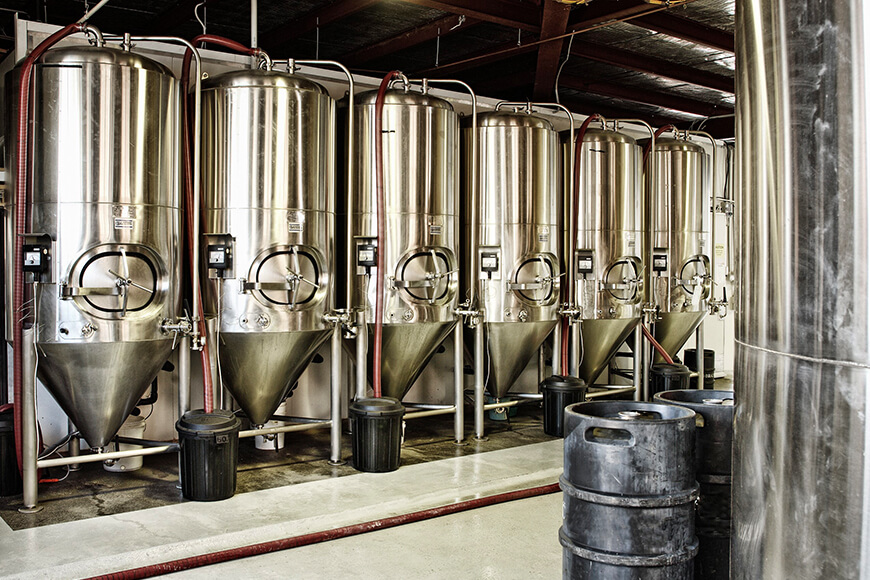
A micro brewery with stainless steel processing and storage
How to Sanitize Stainless Steel
Even a high grade stainless steel can corrode and create off-flavors if it is cleaned incorrectly. While it can be cleaned with harsher cleaners than copper or aluminum, there are still cleaners that should be off-limits.
As with all metals used in the brewery, bleach is out. Basically, just throw out all your bleach so you aren’t tempted by its siren’s call. Bleach damages the protective chromium oxide layer on stainless steel, which in turn causes pitting corrosion.
Other oxidizing cleaners are generally safe. Percarbonate based cleansers are recommended for day to day sanitation. The best heavy-duty options are specifically labelled stainless steel cleaners or oxalic acid based kitchen cleansers.
Want to learn more about how to care for your stainless steel brewing equipment? Read more here.
Sources
- Palmer, John. “Brewing Metallurgy”.

